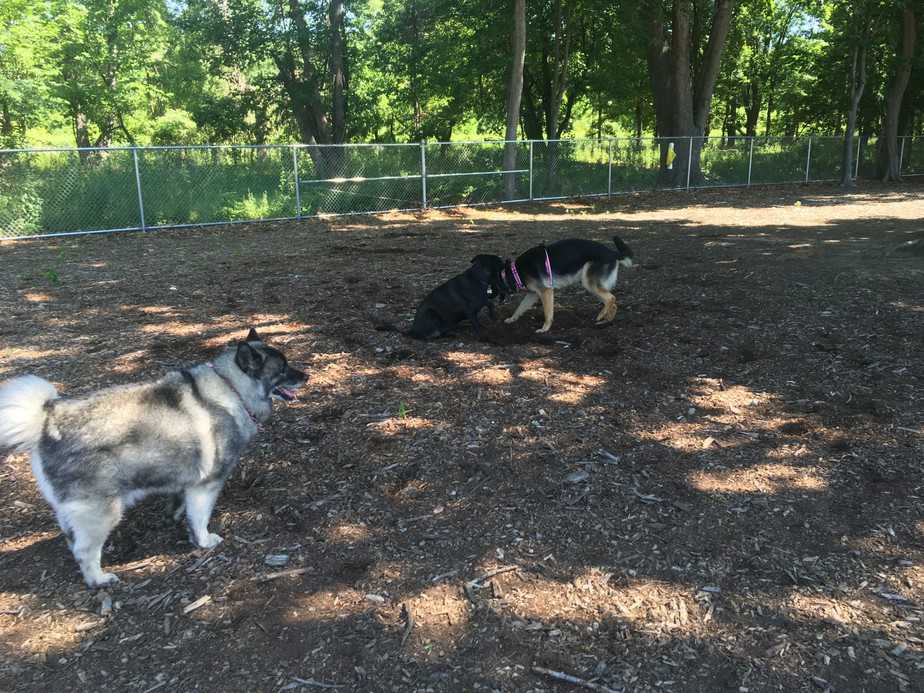As much as we love our furry companions, certain behaviors can be frustrating and challenging to deal with. Jumping, excessive barking, and inappropriate digging are among the most common issues dog owners face. These behaviors not only cause distress for the owner but can also lead to safety concerns and damage to property. By understanding the underlying causes of these behaviors and implementing proper training techniques, you can effectively address and resolve these issues, creating a more harmonious relationship with your canine friend. This is a contributed post.

Jumping: Curbing Your Dog’s Overenthusiastic Greetings
Jumping is a natural behavior for dogs, often stemming from their desire to greet and interact with people face-to-face. However, this can be problematic, especially when dealing with larger dogs or when greeting elderly individuals or small children. To address jumping, it’s essential to redirect your dog’s energy and teach them alternative, more appropriate ways to greet people.

Start by ignoring your dog’s jumping behavior, avoiding eye contact, and turning away from them. Only acknowledge and interact with your dog when all four paws are on the ground. Consistently reward calm, four-on-the-floor behavior with praise and treats. You can also teach your dog an incompatible behavior, such as sitting or lying down, which they cannot perform while jumping. Practice these techniques with family members and friends, ensuring that everyone follows the same protocol to maintain consistency in your dog’s learning.
Excessive Barking: Finding the Cause and Implementing Solutions
Barking is a natural form of communication for dogs, but when it becomes excessive or prolonged, it can be a nuisance for both owners and neighbors. To address this issue, it’s crucial to identify the underlying cause of the barking. Common reasons include boredom, anxiety, territorial behavior, or seeking attention. However, when barking becomes excessive, prolonged, or occurs at inappropriate times, it can be a significant source of stress for both owners and neighbors. To effectively address this issue, it’s essential to identify the underlying cause of the barking and implement targeted solutions.
Common reasons for excessive barking include:
- Boredom and lack of mental stimulation
- Anxiety or fear
- Territorial behavior
- Attention-seeking
Once you’ve identified the cause, you can implement targeted solutions. For boredom-related barking, increase your dog’s mental and physical stimulation through interactive toys, puzzle feeders, and regular exercise. If your dog barks due to anxiety or fear, work on building their confidence through positive reinforcement training and gradual exposure to the triggering stimuli. For territorial barking, teach your dog a “quiet” command and reward them for calm behavior in the presence of perceived threats.
In some cases, tools such as e-collars for dogs can be used to interrupt excessive barking, but it’s essential to introduce these devices under the guidance of a professional trainer to ensure proper and ethical use. Always prioritize positive reinforcement techniques and address the root cause of the barking for long-term success
Digging: Redirecting Your Dog’s Natural Instincts
Digging is a natural instinct for many dogs, serving various purposes such as seeking comfort, hiding treasured items, or pursuing prey. While digging can be a fulfilling activity for dogs, it can also lead to destruction of property, escape attempts, and potential safety hazards. To effectively address digging behavior, it’s essential to understand your dog’s motivation and provide appropriate outlets for this instinct.
To minimize destructive digging, consider the following steps:
- Provide plenty of mental and physical stimulation through exercise, playtime, and engaging toys
- Ensure your dog has a cool, comfortable resting area to avoid digging for temperature regulation
- Designate a specific digging area in your yard, filled with loose soil or sand, and teach your dog that this is the only acceptable place to dig
- Consistently redirect digging behavior to the designated area and reward your dog for using it appropriately
If your dog’s digging is driven by prey drive or escape attempts, take additional measures to secure your yard and address potential entry points for small animals. This may involve:
- Installing proper fencing and barriers
- Supervising your dog’s outdoor time
- Interrupting digging behavior with a firm “no” or a noise-making device
- Redirecting your dog’s attention to more appropriate activities
Conclusion
Addressing common canine behavior problems like jumping, barking, digging requires a combination of patience, consistency, and a thorough understanding of your dog’s motivations. By identifying the root causes behind these behaviors and implementing targeted training techniques, you can successfully redirect your dog’s energy and teach them more appropriate ways to interact with their environment.
Remember, every dog is unique, and what works for one may not work for another. Be willing to adapt your approach as needed and seek the guidance of a professional dog trainer if the issues persist or escalate. With dedication, a positive reinforcement-based approach, and a commitment to meeting your dog’s physical and mental needs, you can overcome these common behavior challenges, strengthening your bond with your furry friend and creating a more harmonious home environment for all.